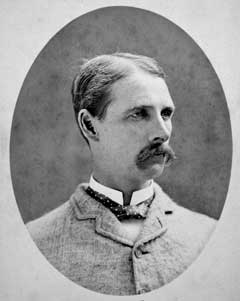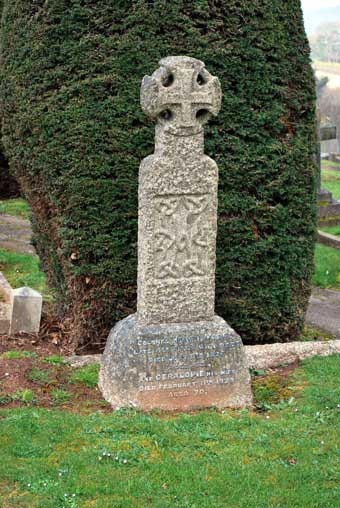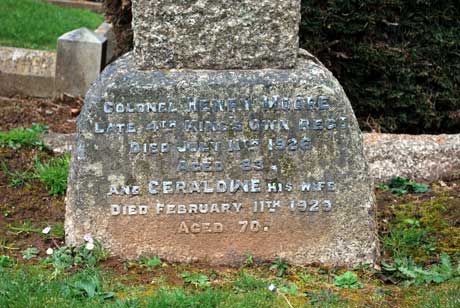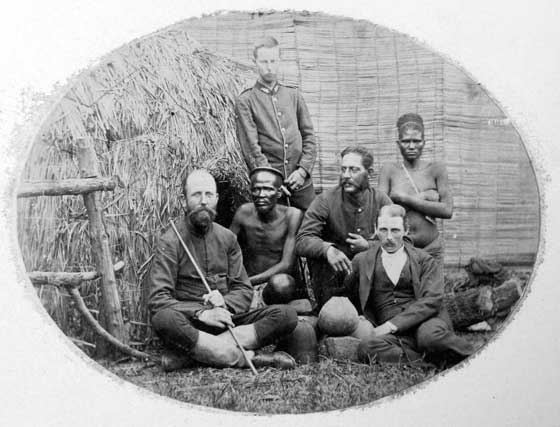Photo Gallery
Individual Graves & Memorials
Colonel Henry Moore
Henry Moore
was born on 7th March 1843 and was commissioned as an Ensign into the
4th Foot, King's Own Royal Regiment, on 15th January 1864. He was
promoted Lieutenant on 27th March 1869 and Captain on 1st August 1877.
He was promoted Major on 1st July 1881 and Lieutenant Colonel on Half
Pay on 7th March 1891 and on Full Pay on 4th April 1892. He was
Brevet Colonel from 4th April 1896 and full Colonel from 1st February
1897.
He was Recruiting Staff Officer Class 1, Woolwich, from 4th April
1892 to 16th April 1895 and then at London from 17th April 1895 to 31st
January 1897. He was Chief Recruiting Staff Officer, London from
1st February 1897 until his retirement on 7th March 1900. He
received the South African War Medal 1879 (Zulu Campaign). He was
also Mentioned in Despatches.
The following account is republished from the “West Somerset Free
Press”:-
At the advanced age of 83 years, Colonel Henry Moore, JP, passed away at
his residence, Higher Woodcombe, on Sunday, 11th July. Colonel Moore
came of an old Irish family, whose seat was in Queen’s County. He was
the son of the Rev J L Moore, DD, Vice Provost of Trinity College,
Dublin, and early in life he entered upon an army career, his choice
being the King’s Own Regiment. He was one of the few remaining survivors
of that short but costly war in 1879 against the Zulus under their king,
Cetewayo – a war which bequeathed to our history books the stories of
the disaster of Isandlwana, the heroic stand at Rorke Drift, and the
tragedy of the Prince Imperial, the son of Napoleon III, who was killed
by the Zulus in a surprise attack. It was only last year that Colonel
Moore, as a contemporary actor on the scene of this last tragedy,
contributed an account of the Prince Imperial’s fate to “The Times.”
Ultimately, after Cetewayo had been captured and hostilities ended,
Colonel Moore was a member of the Boundary Commission, appointed to
carry out a difficult task after the war.
For some years afterwards, Colonel Moore was in India. He served there
on the staff of General Aitchinson, whose eldest daughter became his
second wife in 1881. On his return from India, Colonel Moore became
Chief Recruiting Officer at St. George’s Barracks, which position he
held for several years before retiring in 1900 and coming to Somerset to
live. A Somerset lady, Miss Geraldine Eleanor Carew younger daughter of
the late Colonel Carew, became Colonel Moore’s third wife and she
survives him.
Colonel Moore came little into prominence in a public way, though in
addition to being a Justice of the Peace from 1902, he held sundry
responsible appointments. He was a member of the Exmoor Lodge of
Freemasons and was an officer of the Royal Arch Chapter up to about two
years ago. In one particular connection his name should be long
remembered. He was largely instrumental in starting the Red Cross
movement in 1911 and was district director of the British Red Cross VAD
when war broke out in 1914. The Society’s medal for war service was
awarded him in 1919.

Captain Henry Moore of the King's Own Royal Regiment. Known to his
brother officers as 'Agnes'.
Accession Number: KO0117/49 and KO0285/15

Grave of Colonel Henry Moore, late 4th King's Own Regiment who died on
11th July 1926. Minehead Cemetery, Somerset.
Accession Number: KO3017/01

Grave of Colonel Henry Moore, late 4th King's Own Regiment who died on
11th July 1926.
Accession Number: KO3017/02

The officer standing is Lieutenant Bonomi, and seated from left to
right is Captain Crofton, Major Laurence and Captain Henry Moore,
photographed when the 2nd Battalion, King's Own was on active service in
South Africa during the Zulu War of 1879.
Accession Number KO0117/63 & KO0738/01
© Images are copyright, Trustees of the King's Own Royal Regiment Museum.
You must seek permission prior to
publication of any of our images.
Only a proportion of our collections
are on display at anyone time. Certain items are on loan for display
in other institutions. An appointment is required to consult any of
our collections which are held in store.





